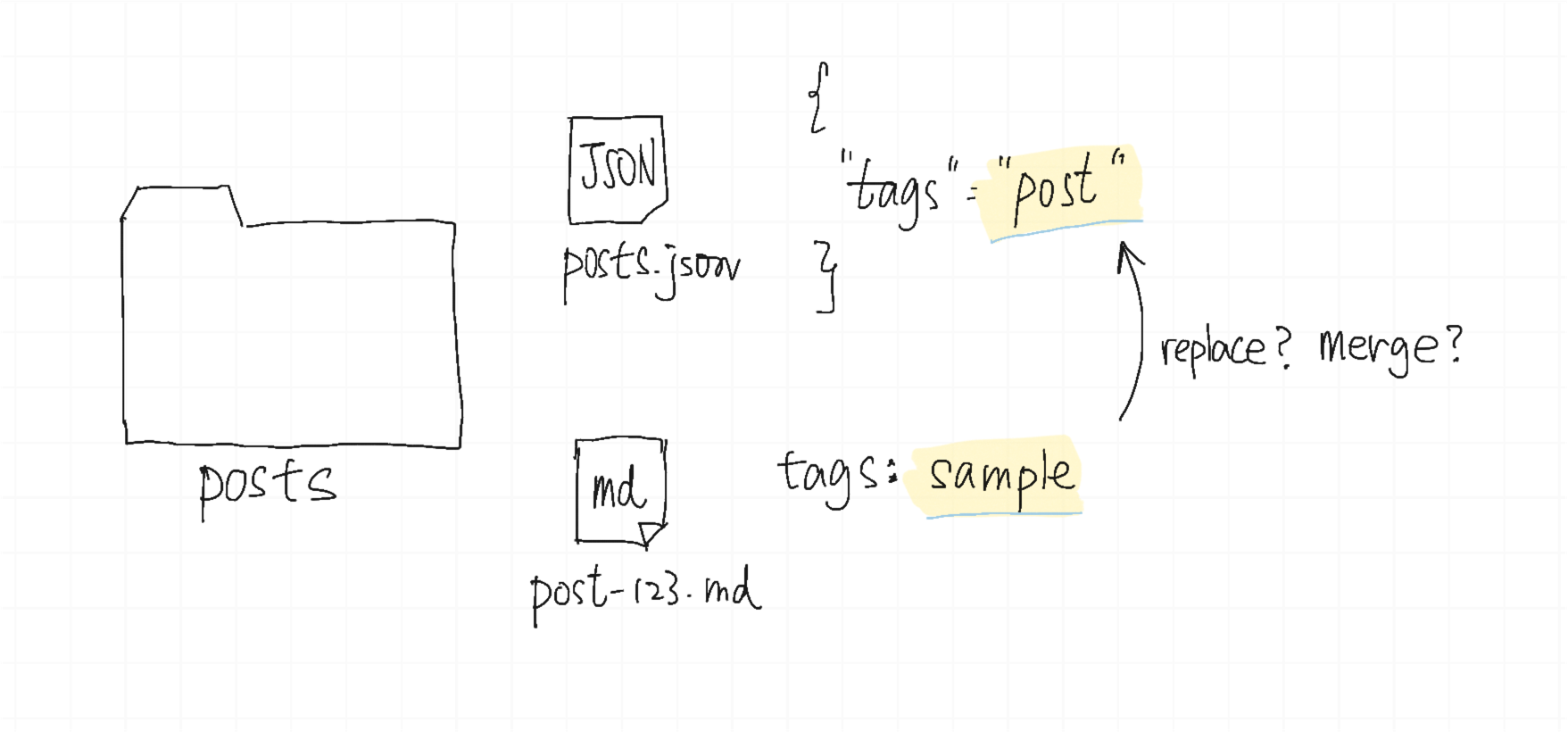Lesson 9—Data and Collection
In this section, we will learn:
- Tag
- Data merge
- Custom collections
Collection
_includes/layout.html file:
<ul>
{% for post in collections.post reversed %}
<li>
<a href="">
{{ post.data.title }}
</a>
</li>
{% endfor %}
</ul>
_includes/post.html file:
---
layout: layout
---
<h1>Lesson 9—Data and Collection</h1>
<p>Published at Fri Jul 31 2020 03:28:45 GMT+0000 (Coordinated Universal Time)</p>
Deep merge

We can have default data defined in a folder via folder_name.json. Depending on the characteristics of the data type in the folder, we may either want an individual item to replace this default data or merge the data set.
module.exports = function(eleventyConfig) {
// Allow data cascading instead of replacing. Mainly for post tags.
eleventyConfig.setDataDeepMerge(true);
};
Using custom collection to get latest 3 items
In this example, we create a custom collection to fetch the latest 3 items via JavaScript.
module.exports = function(eleventyConfig) {
eleventyConfig.addCollection("lastThreeTasks", function(collection) {
return collection.getFilteredByTag('task').slice(-3).reverse()
});
};
Now we can use the collection, which is an array of items.
<h2>Latest 3 Tasks</h2>
<ul>
{% for task in collections.lastThreeTasks %}
<li class="is-done-">
{{ task.date toISOString }}
{{ task.data.title }}
</li>
{% endfor %}
</ul>
Adding shortcode
Shortcode is a JavaScript code snippet to return a new output from the given input.
For example, the following shortcode get the last post title from the given collection.
module.exports = function(eleventyConfig) {
eleventyConfig.addShortcode("lastPostTitle", function(collection) {
return collection[collection.length-1].data.title
});
}
Now we can use the code in our HTML or Markdown content:
<p>My latest post is {% lastPostTitle collections.post %}.</p>